All too often, we hear complaints from home improvement businesses that lead aggregators aren't worth it. But we're here to tell you that with the right tools, team structures, and techniques, you can turn your lead aggregator into your highest source of revenue.
Read on for 11 ways to get more out of your lead spend.
11 ways to get more out of your lead sources
If you want to get more appointments and sales out of the leads you're paying for, here's what you need to do.
1. Choose the right lead aggregator
First and foremost, make sure you're choosing a lead aggregator that you can trust. You want one that
- Understands your business goals
- Is familiar with your vertical
- Is transparent with pricing and credit policies.
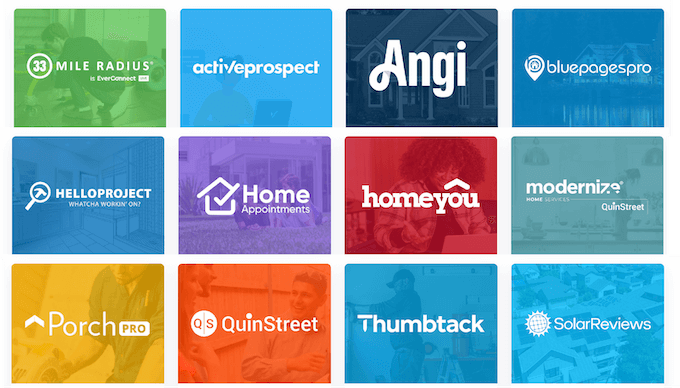
For help with this, check out these 21 questions to vet lead aggregators.
2. Nail down your customer personas
It’s not enough to just have a target audience. Homeowners on a budget in the Bay Area is not going to cut it. You need to understand your personas—the people within your target audience, as people, with a soul and a lifestyle and a particular set of goals and challenges.
Here are some things to consider:
- Demographics: like age, income, location
- Lifestyle: Their family, hobbies, job, daily routines, neighborhood they live in, yard type, spending habits, where they shop
- State of home: Value of home, location, neighborhood
- Experience: With home remodeling, past vendors, platforms like Houzz or Pinterest, and more.
- Values: Do they care about money or about living in a place they can call home? Do they value knowledge and understanding or would they rather be hands off and let you take care of it all?
- Challenges: Are they limited by budget, experience, time, or any other concerns?
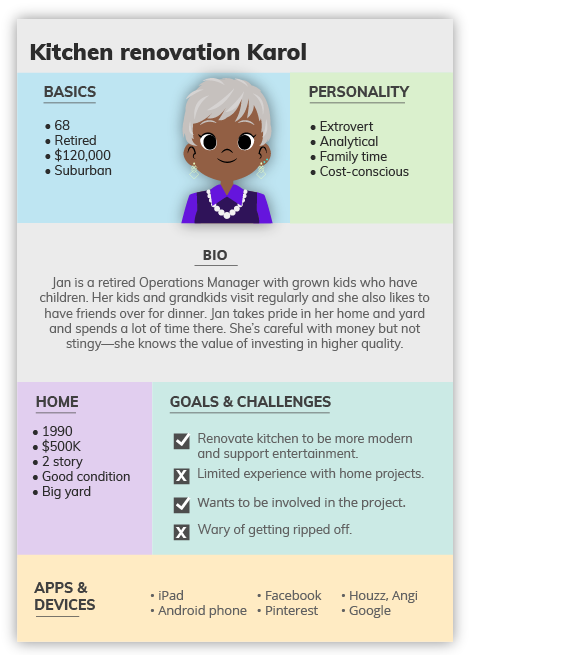
The more detailed you get with them, the more criteria you can provide to your lead aggregator. The more criteria they have, the better leads they can deliver to you and the higher your ROI.
3. Optimize your listings
Each lead generation site works a little differently, but for many of them, you will have a listing for your company. Make sure you keep this listing in top shape so that it stands out above other listings and attracts homeowners. For example:
- Keep your information clear, complete, and accurate.
- Keep all license, certification, and insurance information updated.
- Regularly add high-quality photos of your projects and team members.
- Get reviews from happy customers
- Make sure the services you provide on your profile are concise and up to date.
4. Use a CRM
Purchasing a high volume of leads without having a customer relationship management system (CRM)? Not a good idea.
A CRM is a platform that houses all of your contacts—leads, prospects, customers, churned customers—and all of their interactions with your business. This allows you to build, manage, and keep track of all your relationships.
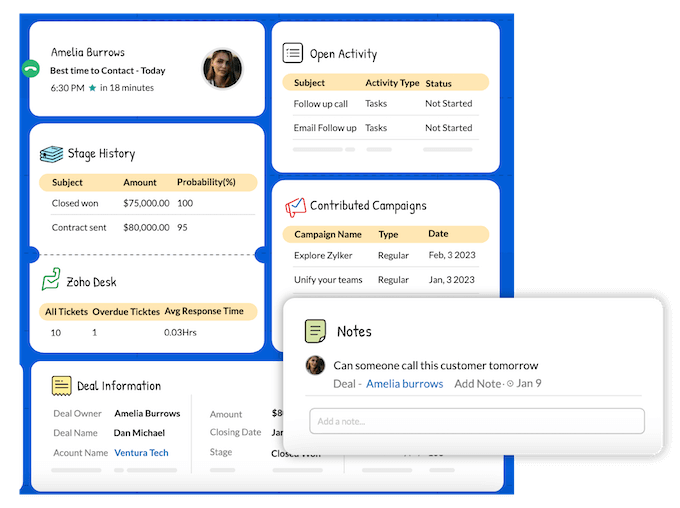
Image source
This way, your leads don't go cold, quotes don't fall through the cracks, customers get special attention—all of which contribute to higher sales and retention.
For even more ways to improve ROI using your CRM, check out our tips on getting the most out of your CRM.
5. Reach out to leads within 5 minutes
It’s imperative that as soon as a lead comes into your business, you reach out to them fast.
How fast?
Put it this way: After 5 minutes passes, the chances of converting a lead decreases by 900%. That’s right, no typos there.
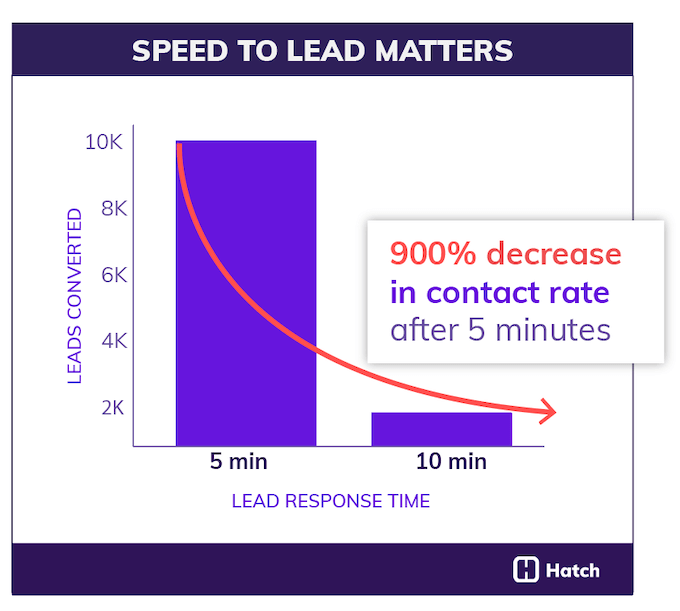
When a person is in search of a home improvement service, they’re poking around, searching on directories and submitting their contact information to multiple vendors. You need to reach out to leads within 5 minutes if you want to increase your appointment set rate. This is what we call speed to lead.
The best way to improve your speed to lead?
- Use the right team. A proper team structure that defines who handles and engages with inbound leads.
- Use multiple channels. This means reaching out via phone, email, AND text. We’ll get to that next.
- Use the right tools. A CRM is a given. A communication platform is also a given. But what you really need is an automated communication platform....which is what we'll cover next.
6. Automate your outreach
This is THE key to reaching out to every lead within five minutes. An agent can step in once the customer responds, but with this part of the workload automated, you can reach out to a heck of a lot more leads.
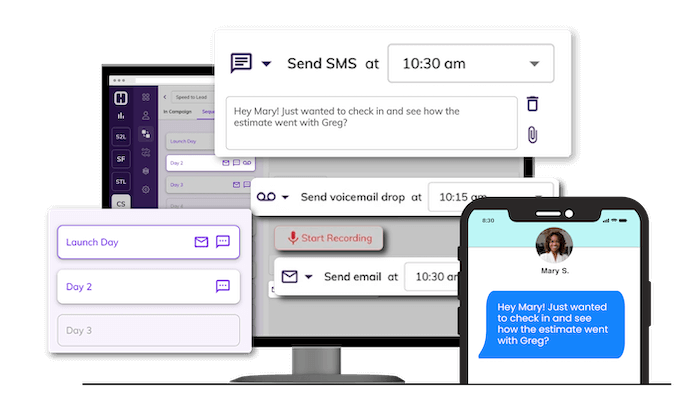
Learn more about how to automate your lead outreach here.
A higher volume of outreach means more responses. And since it’s automated, the reps who would otherwise be making the calls now have the time to engage with the ones who do respond.

7. Lead with text
This is a big one. Most, if not all, of our customers and prospects are hesitant to use texting for their business. For years, it’s been an industry best practice to call your leads. This makes sense, as a person would much rather talk out than text out what their problems and needs are.
But what happens is, all too often, businesses call and call and call and call. This is not effective.
But think about this: Most people are searching around for services while they’re at work. They’re not likely to pick up a phone call while they’re working but they are definitely likely to read and answer a text.
And think of text as just the first step to get a response. Then they can tell you when they’re available to speak on the phone.
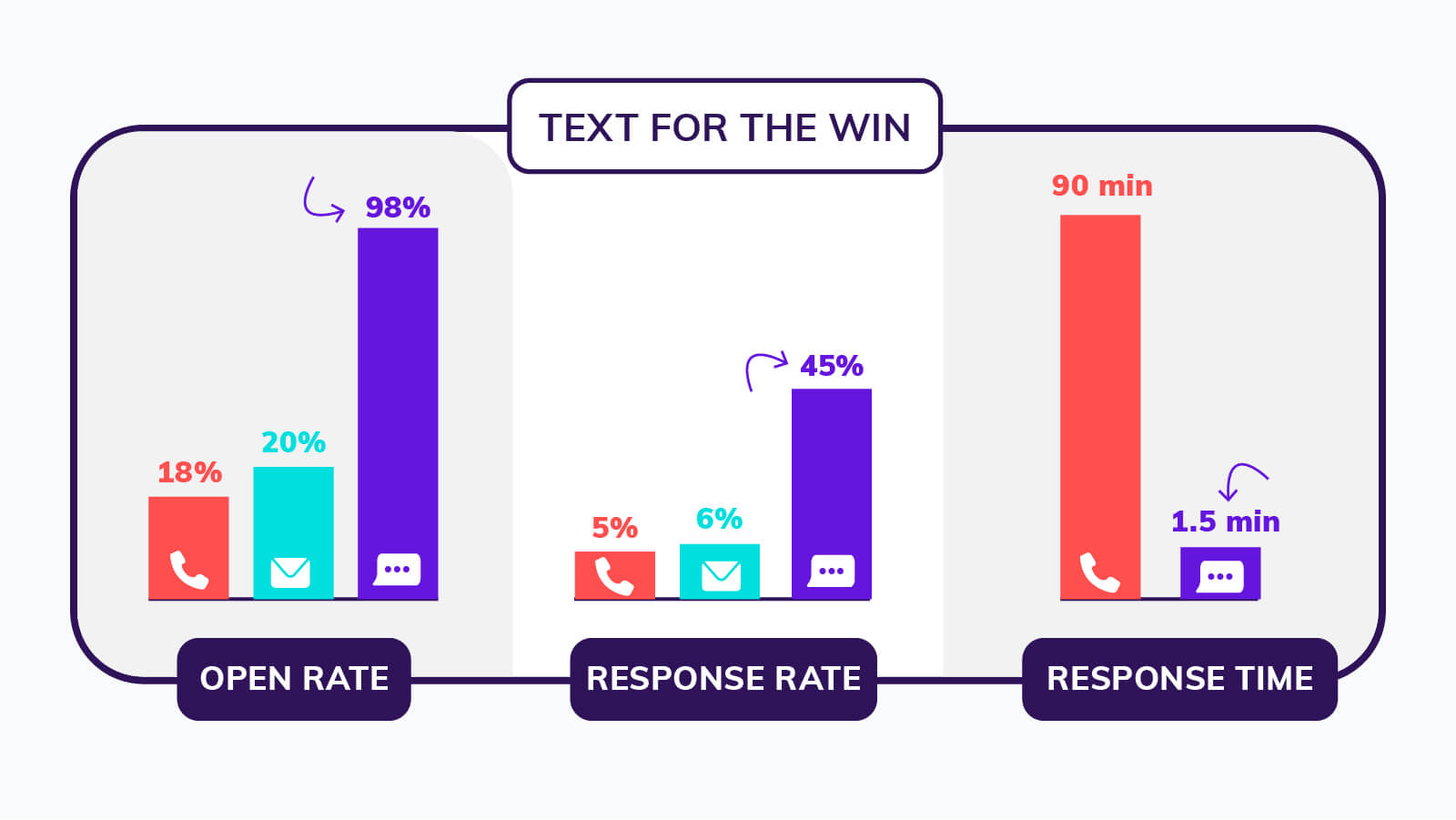
And if you’re not yet convinced, let’s go over the numbers:
- 98% of texts are opened and read
- 99% of those texts are replied to
- 98% of people ignore calls from numbers they’re not familiar with
- 90% of people want to have text conversations with businesses.
The numbers don’t lie! If you’re not texting your leads, you’re quite literally giving them away to your competitors and throwing away your investment into your lead aggregator.
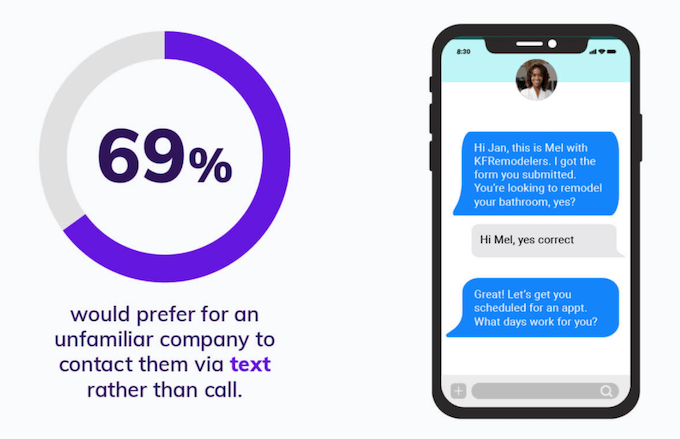
8. Be persistent
Okay so all of the above sounds great, and it is. But even though texts are answered far more than phone calls, phone calls and emails do still get answered too. And not everyone responds to the first text. This is where cadences come into play.
The worst thing you can do with your leads (aside from just repeat calling them all day long) is text a lead once and then give up after no response. With a cadence, you’ll reach out across multiple channels over the course of a few days.
For example:
- Day 1: text, email, and call, once each.
- Day 2: text and email one time each
- Day 3: call once
- Day 4: pause
- Day 5: text
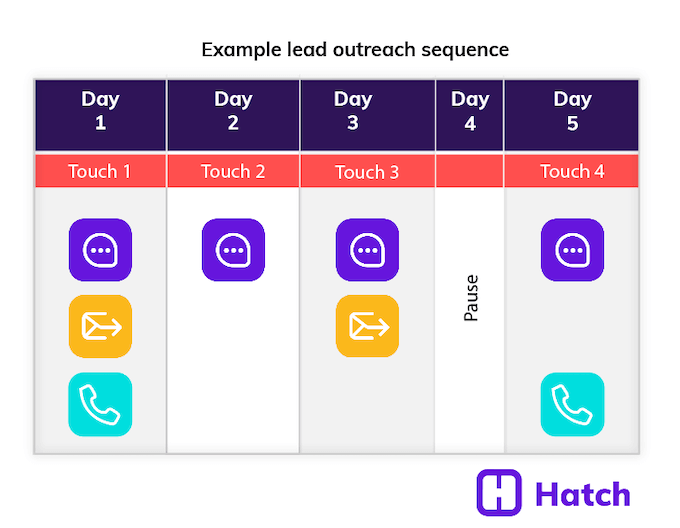
This is just an example—what works best will depend on your business and channels. But the bottom line is, it works. It takes a few outreaches to get a response. Which leads us to the last mistake: letting prospects go cold.
9. Follow up after quotes
So you’ve improved your speed to lead and you’re setting more appointments than ever. You’re pumped that your investment into your lead aggregator is really paying off. But you’re still not quite seeing it on paper. Your bottom line still isn’t growing.
More likely than not, you’re not following up with your prospects effectively. Just as we see many businesses reaching out to leads only once, we also see them following up after appointments only once or twice. The truth is, it can take anywhere from 5-12 touches to get a response.
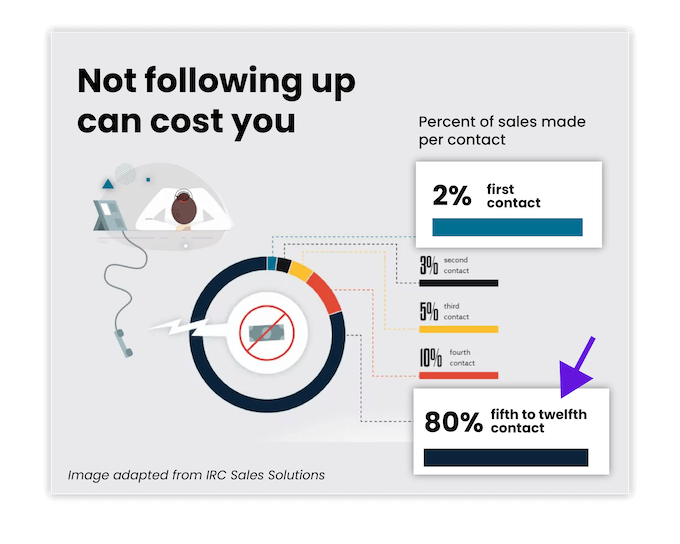
So, an effective follow-up strategy should also use a cadence—multiple touches over multiple channels over multiple days.
For example:
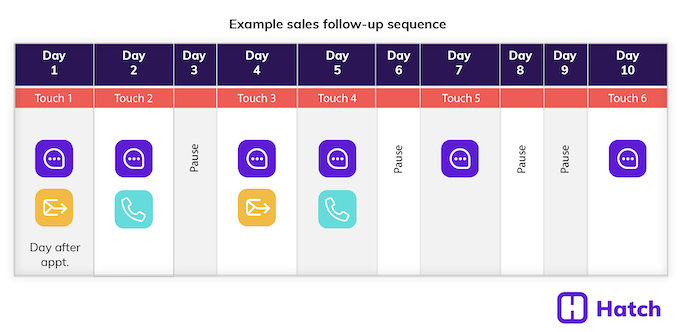
- Day 1: Day after appointment: text and email once.
- Day 2: Text and voicemail
- Day 3: Pause
- Day 4: Text and email
- Day 5: Text and voicemail
- Day 6: Pause
- Day 7: Text
- Days 8-9: Pause
- Day 10: Text
And just like with lead outreach, you can automate your sales follow-up as well.

10. Keep your messages brief
So maybe you are using email or text messaging. But you’re not getting responses. Well, do your messages fit any of the below criteria?
- Longer than 40 words
- About you only (the history of your company, how long you’ve been in business for, etc.)
- Multiple messages at once
Less is more, people!
An example lead outreach text looks something like this:
Hi [Name], it's [Name] with [Company]. I got your information from the form you submitted and I wanted to get you scheduled for an appointment or answer any questions you have. How can I help?
And an example sales follow-up email looks like this:
SUBJECT: <Company Name> | [Name], I hope I can help!
[Name],
I was looking at your quote, I just wanted to know if there is any reason you might NOT move forward or if I can answer any questions?
Thank you,
[Name]
They're short. They don't task the customer with reading and digesting. They simply invite a response. If you’re bombarding customers with what should be your about us page on your website, you’re going to scare them away.
11. Set benchmarks
To improve ROI on your lead spend, you need to improve your speed to lead. But how can you improve your speed to lead if you don’t know what it is in the first place?
How can you tell if you’re getting a return on your investment if you’re not tracking which leads are closing and how long they’re taking to close?
It’s important to establish benchmarks so you can set goals and get visibility into your growth. Maybe you see fewer leads close during a particular month, but you see that the leads that are closing are from your lead aggregator. Or maybe you see the opposite. The point is, without the right data and reporting, you can’t get visibility into the factors that are impacting your appointment and close rates and take the right corrective course of action.
Start getting more out of your lead sources today
As you can see, improving ROI on your lead spend doesn’t require harder work, just smarter work, and all of our recommendations are based on data and thousands of conversations we’ve examined. So follow these tips and you can bet you’ll start seeing increased revenue and a higher return on your investment into leads.
- Choose the right lead aggregator
- Know your ICP/target customer
- Optimize your listing
- Have a CRM
- Reach out to your leads immediately
- Automate your outreach
- Text your leads
- Use multi-day, multi-touch campaigns
- Follow up with prospects after appointments
- Keep your messages short
- Set benchmarks and track your performance